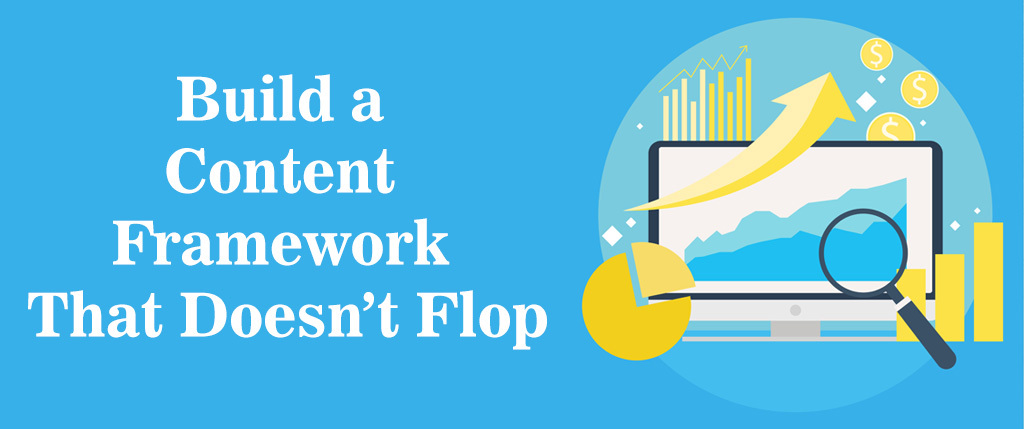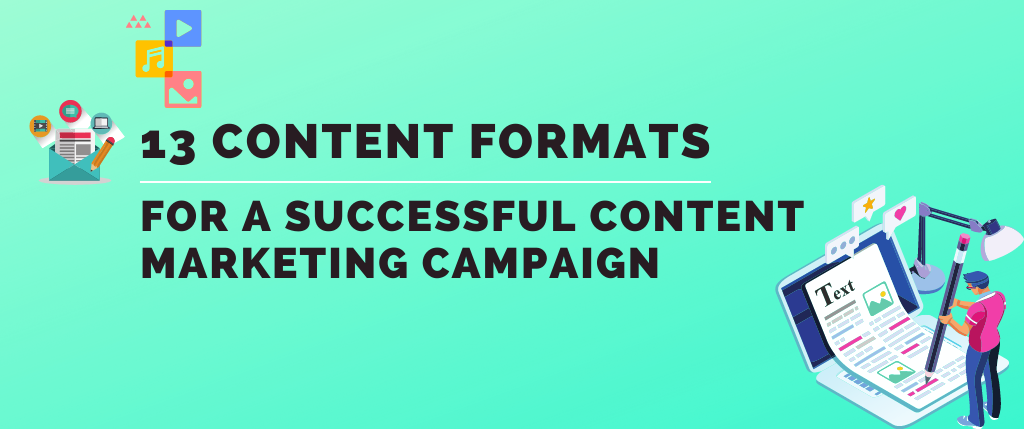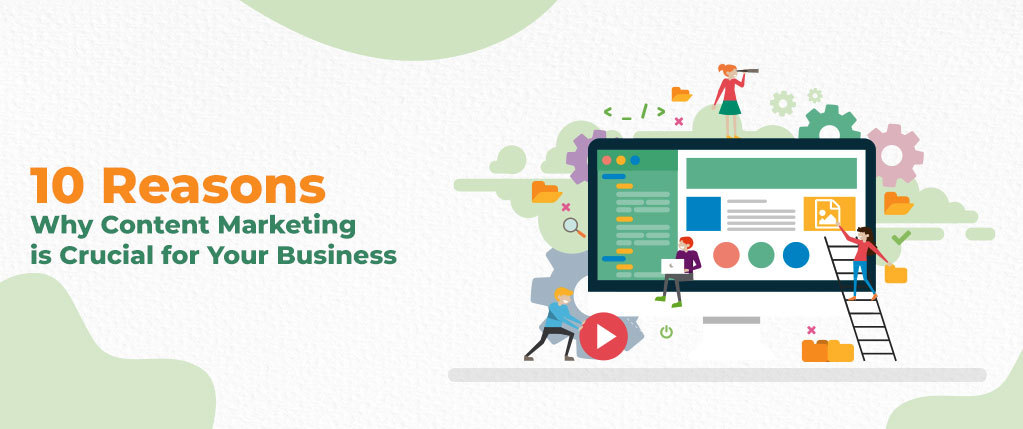Content marketing is the foundation of all digital marketing strategies taken by any organization. And, the reason is simple — it blends with all sorts of marketing strategies such as social media, influencers, SEO, etc. Without content, no marketing strategy will succeed and thus content is at the heart of all digital marketing.
Good content isn’t good enough anymore. Content is only getting better! The purpose of content creation needs optimisation and, most importantly, realistic and actionable content marketing goals.
Without it? Your content might go flop.
You may have heard, “Content is the King”, but have you ever wondered what goes into the process of creating exceptional content? Content development requires purpose, research, optimization, and most importantly, the ability to create a connection with your core audience.
Synclarity hosted an insightful webinar to help you learn the key aspects of content to grow your business and engage your audience. Here are a few essential elements of the webinar by Jaljeet Ajani, Co-founder of Synclarity. He is a Content Marketing expert who loves content in all its forms. He specializes in building content that evolves with the needs of the brand.
Let’s see what the webinar was all about.
What exactly is the Framework of Content?
In short, it’s a structured plan to target how you’re going to create content, why you’re going to create it, for whom you’re going to create it, and how it affects your marketing plan.
There are many types of content frameworks, but Jaljeet spoke about the most effective ones in the webinar.
Here is a list of content frameworks. Let’s look at them one by one.
The Rule of 3
Among the most significant aspects of producing effective content is:
- How well the content is delivered?
- How much of an effect it has on an audience?
- How efficient is it in delivering a message?
When you are creating content for social media or digital advertising, there is one rule to stick to that will have the greatest effect on how successfully your message is received — The Rule of Three.
What Exactly is Rule of Three?
The Rule of Three is based on the idea that things that come in threes are usually funnier, more enjoyable, or more successful than any other number. When used in words, either by speech or text, the audience is more likely to consume the information if it is written in threes.
Think of it. The rule of three applies everywhere.
- The most intriguing taglines — Just Do It, I’m Loving It, Impossible is Nothing
- The most famous movies — Amar Akbar Anthony, 3 Idiots
- The most famous rhymes — The Three Wise Man, The Three Musketeers
- The most famous day to day phrases — Solid, Liquid, Gas, 3 Course Meal: Starter, Main-Course, Desert

https://www.instagram.com/p/CBjWawvJsLo/
This structure is very important to both the conveyance of the message one is attempting to deliver to a reader, as well as how well a reader can understand the message. It’s no mistake that good stories have a beginning, middle and end, and films and literature are mostly written as three related works in the form of a trilogy.
Three-Act Structure
Next framework is – The Three-Act Structure.
As a content marketer, always ask yourself, who is the hero of your story?
The answer is – Hero is your audience.
Each piece of content you design needs to be presented with the idea that it is useful advice in order to help the hero along their journey.
When you keep that in mind you’ll always be consistently creating content that is both interesting and beneficial to your audience.
Let’s look at Jaljeet’s thought about the 3 Act Structure.
In screenwriting there is a model that divides a story into three distinct sections: Setup (Start), Confrontation (Story), Resolution (Solution).
Source: https://www.studiobinder.com/blog/three-act-structure/
Start: The Start includes introduction of the characters, their story setting, and inciting incident, usually a confrontation that propels us into the second act.
Star: The middle of your story will lift the stakes, you want the viewer to keep watching. This is the main chunk of the plot and always leads us to the worst possible thing that can happen to the hero.
Solution: The end will offer some sort of catharsis or satisfaction, regardless the ending is happy or sad.
The most important takeaway of the 3 Act Structure is knowing that one occurrence will lead to another and then to another. This unifies the act and the context and provides the framework of a story.
The AIDA Model
The third framework mentioned by Jaljeet was “The AIDA Model.”
The AIDA model explains the four phases a buyer needs to go through to become a customer. The stages are Attention, Interest, Desire, and Action (AIDA). During these four phases, your content must draw attention to your brand, create interest in your product or service, create a demand for it, and encourage action to try or purchase it.
Attention
To raise your brand awareness, study your target audience’s issues and passions. Then, construct content that solves their problems and focuses on their passions. Your target market will also be able to discover your content via Google, social media, or another website.
Interest
If your target market is interested in your product or service, they’ll want to know more about your brand, the advantages of your solution, and your future match with them. Providing immediate access to this information will help your target audience imagine a fun future with your solution in their lives.
Desire
The prospects you’re most likely to close are the customers who imagine a future with you. They already enjoy consuming your content and think your product or service would be even better. To do this, keep serving them content. Make sure they subscribe to your blog, follow you on social channels, and browse your offers.
Action
After you generate adequate desire for your product or service, give your prospects the chance to act on it. Place “request a demo”, “free trial”, and “CTAs” on your homepage, pricing page, and product pages to generate an action.
The AIDA model is a reliable framework for leading the audience through the buyer’s journey and encouraging them to act. And if you apply it to your content marketing, you’ll be using an established strategy that can engage, inspire, and turn a prospect into a customer.
Counter Intuitive Reasoning
The last framework is Counter Intuitive Reasoning.
Companies should spend more time researching their customers. An effective strategy for marketing includes developing marketing that answers pain-points of the customer. That means producing content that addresses their problems and not all of those issues are going to be directly related to your product.
Sometimes, it’s smart to go where everyone isn’t. Take advantage of the space afforded to generate interest and attention and leave the masses. When you find a niche that still has interest but has fallen out of fashion, you will fight less, and win more.
Take advantage of these unconventional opportunities to distinguish your business and gain competitive advantage while the rest of the crowd stares straight ahead.
To address this topic, Jaljeet gave a great example of Apple’s campaign – “Here is to the crazy ones.”
This short video shows none of the electronic devices by Apple. It just includes the great thought leaders. You may not have seen them in the ads.
Black and white images of more than a dozen visionaries of the 20th century, from Albert Einstein and Buckminster Fuller to John Lennon and Martin Luther King Jr., stream by as a masterful copy of marketing praises the influence of bold thoughts.
They are the crazy ones who have been passionate enough to think differently, and change computing’s future.
Make Use of These Frameworks
When it comes to strategic thinking and applying insights to steer creative execution, using a framework is like having a blueprint. It illustrates how different pieces of content fit together. Each of these content marketing frameworks represent a specific strategy, approach and plan to execute content marketing.
Use these frameworks as a strategy outline for how to create value and then customize them to suit your business needs.
Click here to learn more about The Framework of Content.


.jpg)

